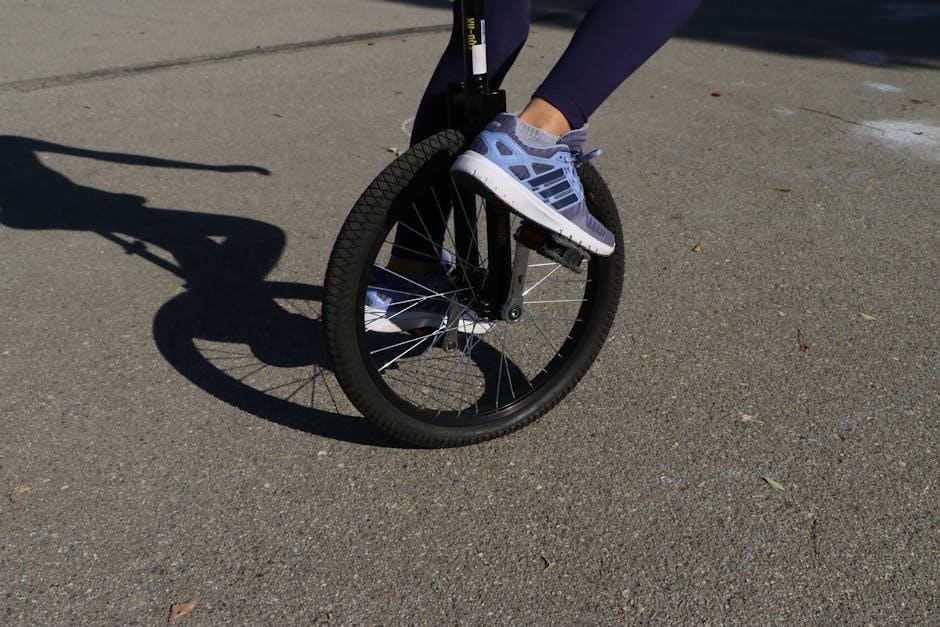Finding the correct size for road cycling shoes is crucial for performance and comfort. Shoe sizes can vary significantly between brands, so relying solely on your regular shoe size isn’t always reliable. Understanding size charts and foot measurements is essential for making the right choice.
Road cycling shoe sizing is a bit unique compared to everyday footwear. These shoes are designed for optimal power transfer and efficiency, demanding a snug and secure fit. Unlike running shoes, where some toe space is preferred, cycling shoes prioritize a close fit to prevent foot movement inside the shoe, which can lead to blisters and wasted energy.
The sizing of road cycling shoes often follows the European (EU) sizing system, which uses numerical values to represent foot length. However, even within the EU system, variations exist between brands. Therefore, understanding how to accurately measure your feet and interpret size charts is vital. Different brands offer size charts, as sizes can vary significantly from brand to brand.
Furthermore, factors like sock thickness and individual foot shape can influence the ideal shoe size. It’s not uncommon for cyclists to wear a slightly different size in cycling shoes compared to their regular shoes. This guide will walk you through the process of finding the right fit, covering everything from measuring your feet to understanding brand-specific sizing nuances.
Understanding Shoe Size Charts
Shoe size charts are essential tools for determining the correct size of your road cycling shoes. These charts typically correlate foot length, measured in millimeters or inches, to shoe sizes in various systems, such as US, UK, and EU. However, it’s crucial to recognize that these charts are not universally standardized. Each brand may have its own unique size chart.
When consulting a size chart, always prioritize the foot length measurement over the general shoe size. Measure your feet accurately, following the instructions provided in the next section, and then find the corresponding shoe size on the brand’s specific chart. Pay close attention to whether the chart is for men’s or women’s shoes, as there can be differences in sizing.
Some charts may also include width measurements, which can be helpful if you have wider or narrower feet. If a brand offers a width option, consider it to ensure a more comfortable and secure fit; Remember that these charts are only a starting point, the most accurate way to ensure a proper fit is to try the shoes on in person, wearing the socks you intend to use while cycling.
Measuring Your Feet for Cycling Shoes
Accurately measuring your feet is the first and most important step in finding the right size for your road cycling shoes. To ensure an accurate measurement, wear the type of socks you typically cycle in. Place a piece of paper against a wall on a hard floor. Stand with your heel against the wall and your foot flat on the paper.
Have someone trace the outline of your foot, or carefully trace it yourself, ensuring the pen or pencil is held vertically. Measure the length from the heel to the tip of your longest toe in millimeters or inches. Repeat this process for both feet, as they may differ slightly in size. Use the measurement from the larger foot to determine your shoe size.
It is best to measure your feet at the end of the day, as they tend to swell slightly throughout the day. If you are measuring alone, you can also use a ruler or measuring tape to measure the length of your foot while standing. Be sure to keep your weight evenly distributed on your foot during the measurement. Accurate measurements are essential for consulting shoe size charts and finding the best fit for your cycling shoes.
Converting Foot Measurements to Shoe Sizes
Once you have accurately measured your feet, the next step is to convert those measurements into the appropriate shoe size. This is where shoe size charts become invaluable. These charts, typically provided by shoe manufacturers, correlate foot length to specific shoe sizes in various sizing systems, such as US, UK, and European (EU) sizes. It’s crucial to consult the size chart of the specific brand you are considering, as sizing can vary significantly.
Locate the row or column that corresponds to your foot length measurement. The chart will then indicate the corresponding shoe size for that brand. Keep in mind that some charts may also include width measurements, allowing for a more precise fit, especially if you have wider or narrower feet. Some brands provide separate charts for men’s and women’s shoes, so be sure to use the appropriate chart.
If your foot measurement falls between two sizes on the chart, it’s generally recommended to choose the larger size. You can then make adjustments with socks or insoles to achieve a more comfortable fit. Remember that the goal is to find a shoe that provides adequate support and prevents your foot from sliding around during cycling.
Differences in Men’s and Women’s Shoe Sizes
When selecting road cycling shoes, it’s essential to understand the differences between men’s and women’s sizing. These differences aren’t just about numerical values; they also relate to the overall shape and fit of the shoe. Women’s feet are generally narrower than men’s feet, particularly in the heel and midfoot regions. Consequently, women’s cycling shoes are typically designed with a narrower last (the foot-shaped form around which the shoe is constructed) to provide a more secure and comfortable fit.
In terms of numerical sizing, there’s often a conversion difference between men’s and women’s sizes. For example, a women’s size 8 might correspond to a men’s size 6.5. However, it’s crucial not to rely solely on these conversions, as they can vary between brands. Always refer to the specific brand’s size chart to determine the appropriate size for your foot length and width.
Some women may find that men’s cycling shoes fit them well, especially if they have wider feet. Conversely, some men with narrower feet might prefer women’s shoes. The most important factor is to try on different shoes and sizes to find the best fit for your individual foot shape and dimensions.
Accounting for Sock Thickness
When determining the appropriate size for your road cycling shoes, it’s crucial to consider the thickness of the socks you’ll be wearing while cycling. The type of socks can significantly impact the fit and comfort of your shoes, so it’s essential to factor this in during the sizing process. Cycling socks are typically thinner than everyday socks, designed to provide moisture-wicking properties and a close fit within the shoe.
If you plan to wear thicker socks, such as those for colder weather, you may need to go up half a size or even a full size to accommodate the extra bulk. Conversely, if you typically wear very thin socks, you might find that your usual size provides a snug fit. It’s always best to try on shoes with the type of socks you intend to wear while cycling to ensure a comfortable and secure fit.
Keep in mind that sock thickness can also affect the shoe’s internal volume. Thicker socks can reduce the available space, potentially leading to discomfort or even pressure points. If you’re unsure about the impact of sock thickness, it’s a good idea to measure your feet while wearing your preferred cycling socks and compare those measurements to the shoe manufacturer’s size chart.
Snug Fit vs. Comfort Fit
When selecting road cycling shoes, a key consideration is whether to prioritize a snug fit or a comfort fit. Both have their advantages, and the best choice depends on your riding style, preferences, and the type of cycling you’ll be doing. A snug fit is generally preferred by competitive cyclists and those seeking maximum power transfer. It minimizes foot movement within the shoe, ensuring that every watt of energy is efficiently transferred to the pedals.

However, a very tight fit can also lead to discomfort, especially on longer rides. Pressure points, numbness, and hot spots can develop if the shoe is too constricting. On the other hand, a comfort fit offers more room for your feet to move and breathe. This is often preferred by recreational cyclists and those who prioritize comfort over pure performance.
A comfort fit allows for better circulation and reduces the risk of foot fatigue on long rides. However, it may also result in some power loss due to foot movement within the shoe. Finding the right balance between snugness and comfort is crucial. A good starting point is to ensure that you have about a thumb’s width of space between the end of your longest toe and the end of the shoe.
Brand-Specific Size Variations
One of the most significant challenges in finding the right road cycling shoe size is the inconsistency between brands. While a standard sizing system exists, manufacturers often have their own unique interpretations and sizing nuances. This means that a size 42 in one brand might feel completely different from a size 42 in another.
These variations can be attributed to differences in shoe lasts, which are the foot-shaped molds used to construct the shoes. Each brand may use a different last shape, resulting in variations in width, volume, and overall fit. Some brands tend to run narrow, while others are wider or have a higher instep.

To further complicate matters, sizing can even vary within the same brand across different models. A performance-oriented shoe might have a more aggressive, snug fit compared to a comfort-focused model. Therefore, it’s essential to research and understand the specific sizing characteristics of each brand and model you’re considering. Consulting brand-specific size charts and reading reviews from other cyclists can provide valuable insights.
Ultimately, the best approach is to try on shoes from different brands whenever possible to find the best fit for your feet.
European (EU) Sizing Explained
European (EU) sizing is the most common sizing system used for cycling shoes worldwide. Its prevalence stems from cycling’s European roots, making it a universal standard across the industry. Unlike US or UK sizing, EU sizing uses a numerical scale that correlates more directly with the actual length of the shoe’s inner sole, measured in millimeters. Each whole EU size typically represents a difference of 6.67 millimeters.
Understanding EU sizing can be helpful when comparing shoes from different brands. Most cycling shoe manufacturers provide EU size conversions alongside US and UK sizes. However, it’s important to remember that these conversions are often approximate and may not be entirely accurate due to brand-specific variations.
EU sizing is generally considered more consistent and reliable than US sizing, which can vary significantly between manufacturers. However, even within the EU system, slight discrepancies can occur. Therefore, it’s always best to refer to the manufacturer’s specific size chart and, ideally, try on the shoes to ensure a proper fit.

If you are unsure about your EU size, measure your foot length in millimeters and consult a conversion chart. Keep in mind that some cyclists prefer a slightly tighter fit for performance, while others prioritize comfort.
What to Do If You Are Between Sizes
Finding yourself between sizes when choosing road cycling shoes is a common dilemma. In such cases, several factors should influence your decision; First, consider the shoe’s intended use. If you prioritize performance and a snug fit for racing, opting for the smaller size might be preferable. However, if comfort is paramount, especially for longer rides, the larger size might be a better choice.
Another factor to consider is the shape of your foot. If you have wider feet, sizing up might be necessary to avoid discomfort or pressure points. Conversely, if you have narrow feet, the smaller size might provide a more secure fit.
When in doubt, it’s generally recommended to try both sizes and walk around in them, paying attention to how your foot feels. Ensure that your toes have enough room to wiggle and that there’s no excessive heel slippage.
If neither size feels quite right, consider using thin or thicker cycling socks to fine-tune the fit. Alternatively, you could explore brands that offer half sizes, which can provide a more precise fit for those in between sizes. Remember, a proper fit is essential for both comfort and performance on the road.
Trying Shoes On: The Best Way to Ensure Fit
While size charts and online guides are helpful, the ultimate test of road cycling shoe fit is trying them on. This hands-on approach allows you to assess comfort, feel, and overall suitability in a way that measurements and charts simply can’t replicate. When trying on shoes, wear the same type of cycling socks you typically use, as sock thickness can significantly impact fit.
Once you’ve slipped your foot into the shoe, pay attention to how your toes feel. There should be a small amount of space at the end, allowing your toes to wiggle slightly. A shoe that’s too tight will restrict circulation and cause discomfort, while one that’s too loose can lead to heel slippage and inefficient power transfer;
Walk around in the shoes, mimicking the motion of cycling. Pay attention to any pressure points or areas of discomfort. Ensure that the shoe feels secure around your heel and midfoot, preventing unwanted movement. If possible, try clipping into your pedals to get a sense of how the shoe feels during a simulated ride.
Ultimately, trust your instincts. If a shoe doesn’t feel right from the moment you put it on, it’s unlikely to improve with use. Don’t hesitate to try on multiple pairs and sizes until you find the perfect fit.
Online Shoe Sizing Tips
Purchasing road cycling shoes online can be convenient, but it requires extra caution to ensure a proper fit. Start by consulting the brand’s official size chart, as sizing can vary significantly. Measure your feet accurately, following the instructions provided in the “Measuring Your Feet” section. Compare your measurements to the size chart to determine the recommended size for that specific brand.
Read customer reviews carefully, paying attention to comments about sizing. Many reviewers will mention whether the shoes run true to size, or if they recommend sizing up or down. Look for reviews from people with similar foot shapes or experiences to your own, as their insights can be particularly valuable.

If possible, order shoes from retailers that offer free returns or exchanges. This allows you to try the shoes on at home and return them if they don’t fit properly. When trying on shoes purchased online, follow the same guidelines as you would in a store. Wear cycling socks, check for adequate toe room, and walk around to assess comfort and security.
If you’re unsure about sizing, consider ordering multiple sizes and returning the ones that don’t fit. This can be more convenient than visiting a physical store and allows you to compare different sizes side-by-side.


